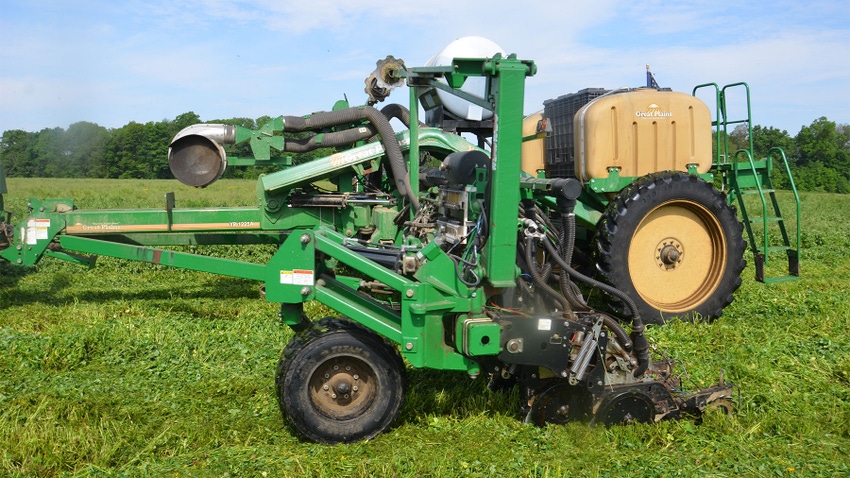March 25, 2024

by Amanda Kautz
It is worth going to ag meetings, especially ones that have speakers and subjects that pique your interest. You will find many like-minded individuals working toward the same goals.
Indiana Conservation Partnership members attended several events recently. By consensus, they agreed that several key points were made in each program. Here are six ideas that might benefit you and your operation:
1. Will it work for you? Everything is not going to work for everyone, and that’s OK! When you’re listening to others’ stories, consider your differences in location, soils, climate, available labor and equipment. Just because you have differences doesn’t mean the idea won’t work, but it might need adjustments.
Remember, there are differences between an established, mature conservation system and a brand-new conservation system. A system in years one through five reacts differently than a mature system of more than five years.
2. Try grazing with “no fence.” Farms in the U.S. are trying collars for livestock that use virtual fence instead of physical fence. This fence is controlled by an app, replacing the need to move temporary fence. Virtual boundaries fence out sensitive areas, too. It’s an easy way to move cattle through the field. A solid exterior fence for safety in case of a failure is still recommended.
3. Share mistakes and failures, not just successes. Often, lessons learned from mistakes can help others avoid the same pitfalls and provide opportunities to work to find solutions together. Some of the most impactful presentations and conversations were those of farmers telling their story about failure and success.
4. Understand biologicals. Biologicals are everywhere. Make sure you know what’s in the product you use. Different active ingredients in biologicals provide different services. Select one that does what you need, such as fixing nitrogen, degrading residue or solubilizing phosphorus. In some instances, researchers have found that biologicals only give a good return on investment in certain conditions or years of high plant stress. Pinpoint best conditions for the one you want to use for the best return on investment. Biologicals are not a replacement for good management.
5. New weed control technology is here. Sprayers with artificial intelligence and cameras can detect weeds and deliver targeted herbicide at up to 15 miles per hour. They also learn what weeds are common in your fields for faster identification. Drones allow for targeted herbicide application. Autonomous weed control robots using AI to identify and cut weeds for herbicide-free control are available. These technologies are all in early stages but could change traditional weed control.
6. Focus on ROI instead of yield. The highest yield doesn’t mean much if there is a low return on investment. ROI is profit-focused and will help you figure out if a change paid for itself. Factor in labor, repairs, interest, insurance and fuel. Consider diversifying your operation to spread risk. Try a small acreage of a new crop if you have a market for it.
Kautz is state soil health specialist with the Indiana Natural Resources Conservation Service. She writes on behalf of the Indiana Conservation Partnership.
You May Also Like




